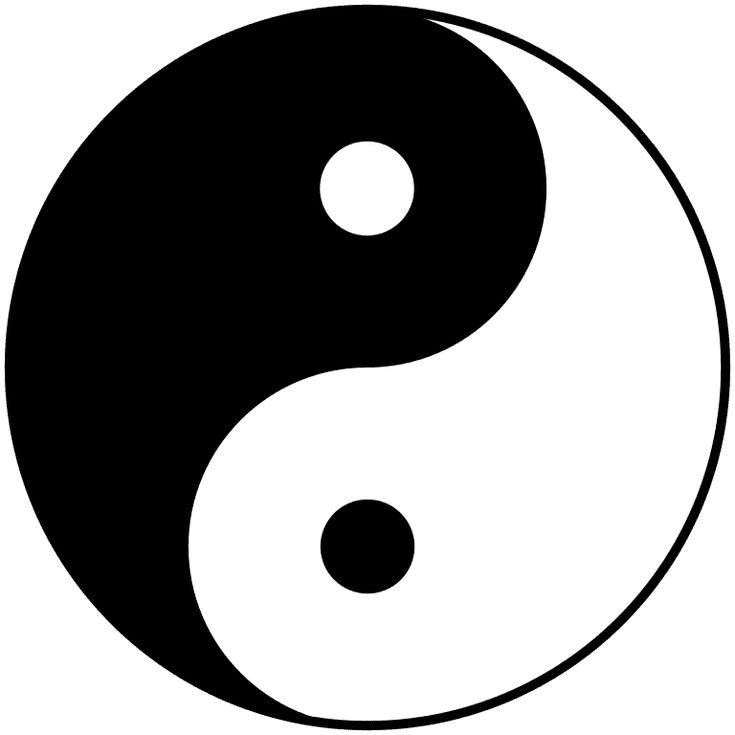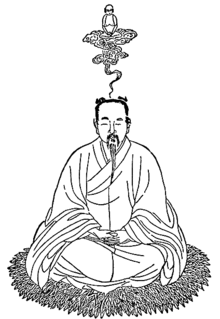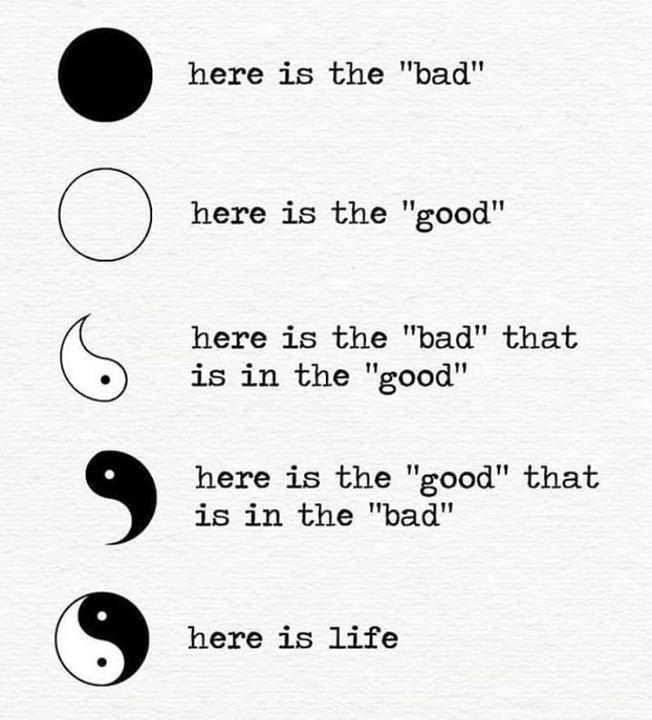


“The direct and the indirect lead to each other in turn.
It is like moving in a circle – you never come to an end.
Who can exhaust the possibilities of their combination?”
Sun Tzu, The Art of War
My pursuit of knowledge led me to the Tao – not by intention but rather coincidence. I am pursuing yoga, and have been reading a lot about spirituality. I stumbled upon the Tao Yin, which got me intrigued in the Tao.
Tao yin (sometimes referred to as Taoist yoga) is a series of exercises (mainly in lying and sitting positions, but also in standing positions) practiced by Taoists to cultivate qi, the internal energy of the body according to Traditional Chinese medicine. The practice of Tao Yin was a precursor of qigong, and was practised in Chinese Taoist monasteries for health and spiritual cultivation. Tao Yin is also said to be a primary formative ingredient in the well-known “soft style” Chinese martial art, T’ai Chi Ch’uan.
The main goal of Tao yin is to create balance between internal and external energies and to revitalize the body, mind and spirit, developing strength and flexibility in muscles and tendons.
Taoism
Excerpt from article by Emily Mark
Taoism (also known as Daoism) is a Chinese philosophy attributed to Lao Tzu (c. 500 BCE) which contributed to the folk religion of the people primarily in the rural areas of China and became the official religion of the country under the Tang Dynasty. Taoism is therefore both a philosophy and a religion. It emphasizes doing what is natural and “going with the flow” in accordance with the Tao (or Dao), a cosmic force which flows through all things and binds and releases them.
The philosophy grew from an observance of the natural world, and the religion developed out of a belief in cosmic balance maintained and regulated by the Tao. The original belief may or may not have included practices such as ancestor and spirit worship but both of these principles are observed by many Taoists today and have been for centuries.
Taoism exerted a great influence during the Tang Dynasty (618-907 CE) and the emperor Xuanzong (reigned 712-756 CE) decreed it a state religion, mandating that people keep Taoist writings in their home. It fell out of favour as the Tang Dynasty declined and was replaced by Confucianism and Buddhism but the religion is still practiced throughout China and other countries today.
Origins
The historian Sima Qian (145-86 BCE) tells the story of Lao-Tzu, a curator at the Royal Library in the state of Chu, who was a natural philosopher. Lao-Tzu believed in the harmony of all things and that people could live easily together if they only considered each other’s feelings once in a while and recognized that their self-interest was not always in the interest of others. Lao-Tzu grew impatient with people and with the corruption he saw in government, which caused the people so much pain and misery. He was so frustrated by his inability to change people’s behavior that he decided to go into exile.

As he was leaving China through the western pass, the gatekeeper Yin Hsi stopped him because he recognized him as a philosopher. Yin Hsi asked Lao-Tzu to write a book for him before he left civilization forever and Lao-Tzu agreed. He sat down on a rock beside the gatekeeper and wrote the Tao-Te-Ching (The Book of the Way). He stopped writing when he felt he was finished, handed the book to Yin Hsi, and walked through the western pass to vanish into the mist beyond. Sima Qian does not continue the story after this but, presumably (if the story is true) Yin Hsi would have then had the Tao-Te-Ching copied and distributed.
The Tao-Te-Ching
The Tao-Te-Ching is an attempt to remind people everyone could live together peacefully if people would only be mindful of how their thoughts and actions affect themselves, others, and the earth.
The Tao-Te-Ching is not a ‘scripture’ in any way. It is a book of poetry presenting the simple way of following the Tao and living life at peace with one’s self, others, and the world of changes. A typical verse advises, “Yield and overcome/Empty and become full/Bend and become straight” to direct a reader to a simpler way of living. Instead of fighting against life and others, one can yield to circumstances and let the things which are not really important go. Instead of insisting one is right all the time, one can empty one’s self of that kind of pride and be open to learning from other people. Instead of clinging to old belief patterns and hanging onto the past, one can bend to new ideas and new ways of living.
The Tao-Te-Ching was most likely not written by Lao-Tzu at the western pass and may not have been written by him at all. Lao-Tzu probably did not exist and the Tao-Te-Ching is a compilation of sayings set down by an unknown scribe. Whether the origin of the book and the belief system originated with a man named Lao-Tzu or when it was written or how is immaterial (the book itself would agree) and all that matters is what the work says and what it has come to mean to readers. The Tao-Te-Ching is an attempt to remind people that they are connected to others and to the earth and that everyone could live together peacefully if people would only be mindful of how their thoughts and actions affect themselves, others, and the earth.
Yin-Yang Thought

Yin-yang thought began as an attempt to answer the question of the origin of the universe. According to yin-yang thought, the universe came to be as a result of the interactions between the two primordial opposing forces of yin and yang. Because things are experienced as changing, as processes coming into being and passing out of being, they must have both yang, or being, and yin, or lack of being. The world of changing things that constitutes nature can exist only when there are both yang and yin. Without yang nothing can come into existence. Without yin nothing can pass out of existence.
Although Taoism and the Tao-Te-Ching were not originally associated with the symbol known as the yin-yang, they have both come to be because the philosophy of Taoism embodies the yin-yang principle and yin-yang thought. Life is supposed to be lived in balance, as the symbol of the yin and the yang expresses. The yin-yang is a symbol of opposites in balance – dark/light, passive/aggressive, female/male – everything except good and evil, life and death, because nature does not recognize anything as good or evil and nature does not recognize a difference between life and non-life. All is in harmony in nature, and Taoism tries to encourage people to accept and live that kind of harmony as well.

Beliefs
There are no “bad people” according to Taoist principles, only people who behave badly. Given the proper education and guidance toward understanding how the universe works, anyone could be a “good person” living in harmony with the earth and with others.
According to this belief, the way of the Tao is in accordance with nature while resistance to the Tao is unnatural and causes friction. The best way for a person to live, according to Taoism, is to submit to whatever life brings and be flexible. If a person adapts to the changes in life easily, that person will be happy; if a person resists the changes in life, that person will be unhappy. One’s ultimate goal is to live at peace with the way of the Tao and recognize that everything that happens in life should be accepted as part of the eternal force which binds and moves through all things.
Taoism claims that nothing is bad in itself, only our self-interest makes us think that some events in life are bad and others good. Actually, all things happen in accordance with the flow of the Tao and, since the Tao is natural, all things are natural.
Unlike Buddhism (which came from India but became very popular in China), Taoism arose from the observations and beliefs of the Chinese people. The principles of Taoism impacted Chinese culture greatly because it came from the people themselves and was a natural expression of the way the Chinese understood the universe. The concept of the importance of a harmonious existence of balance fit well with the equally popular philosophy of Confucianism (also native to China). Taoism and Confucianism were aligned in their view of the innate goodness of human beings but differed in how to bring that goodness to the surface and lead people to act in better, unselfish, ways.
Rituals
This belief in allowing life to unfold in accordance with the Tao does not extend to Taoist rituals, however. The rituals of Taoist practice are absolutely in accordance with the Taoist understanding but have been influenced by Buddhist and Confucian practices so that, in the present day, they are sometimes quite elaborate. Every prayer and spell which makes up a Taoist ritual or festival must be spoken precisely and every step of the ritual observed perfectly. Taoist religious festivals are presided over by a Grand Master (a kind of High Priest) who officiates, and these celebrations can last anywhere from a few days to over a week. During the ritual, the Grand Master and his assistants must perform every action and recitation in accordance with tradition or else their efforts are wasted. This is an interesting departure from the usual Taoist understanding of “going with the flow” and not worrying about external rules or elaborate religious practices.
Taoist rituals are concerned with honouring the ancestors of a village, community, or city, and the Grand Master will invoke the spirits of these ancestors while incense burns to purify the area. Purification is a very important element throughout the ritual. The common space of everyday life must be transformed into sacred space to invite communion with the spirits and the gods. There are usually four assistants who attend the Grand Master in different capacities, either as musicians, sacred dancers, or readers. The Grand Master will act out the text as read by one of his assistants, and this text has to do with the ascent of the soul to join with the gods and one’s ancestors. In ancient times, the ritual was performed on a staircase leading to an altar to symbolize ascent from one’s common surroundings to the higher elevation of the gods. In the present day, the ritual may be performed on a stage or the ground, and it is understood from the text and the actions of the Grand Master that he is ascending.
The altar still plays an important part in the ritual as it is seen as the place where the earthly realm meets with the divine. Taoist households have their own private altars where people will pray and honor their ancestors, household spirits, and the spirits of their village. Taoism encourages individual worship in the home, and the rituals and festivals are community events which bring people together, but they should not be equated with worship practices of other religions such as attending church or temple. A Taoist can worship at home without ever attending a festival, and throughout its history most people have.
Taoism significantly influenced Chinese culture from the Shang Dynasty forward. The recognition that all things and all people are connected is expressed in the development of the arts, which reflect the people’s understanding of their place in the universe and their obligation to each other. During the Tang Dynasty, Taoism became the state religion under the reign of the emperor Xuanzong because he believed it would create harmonious balance in his subjects and, for a while, he was correct. Xuanzong’s rule is still considered one of the most prosperous and stable in the history of China and the high point of the Tang Dynasty.
Taoism has been nominated as a state religion a number of times throughout China’s history but the majority preferred the teachings of Confucius (or, at times, Buddhism), most likely because of the rituals of these beliefs which provide a structure Taoism lacks. Today, Taoism is recognized as one of the great world religions and continues to be practiced by people in China and throughout the world.